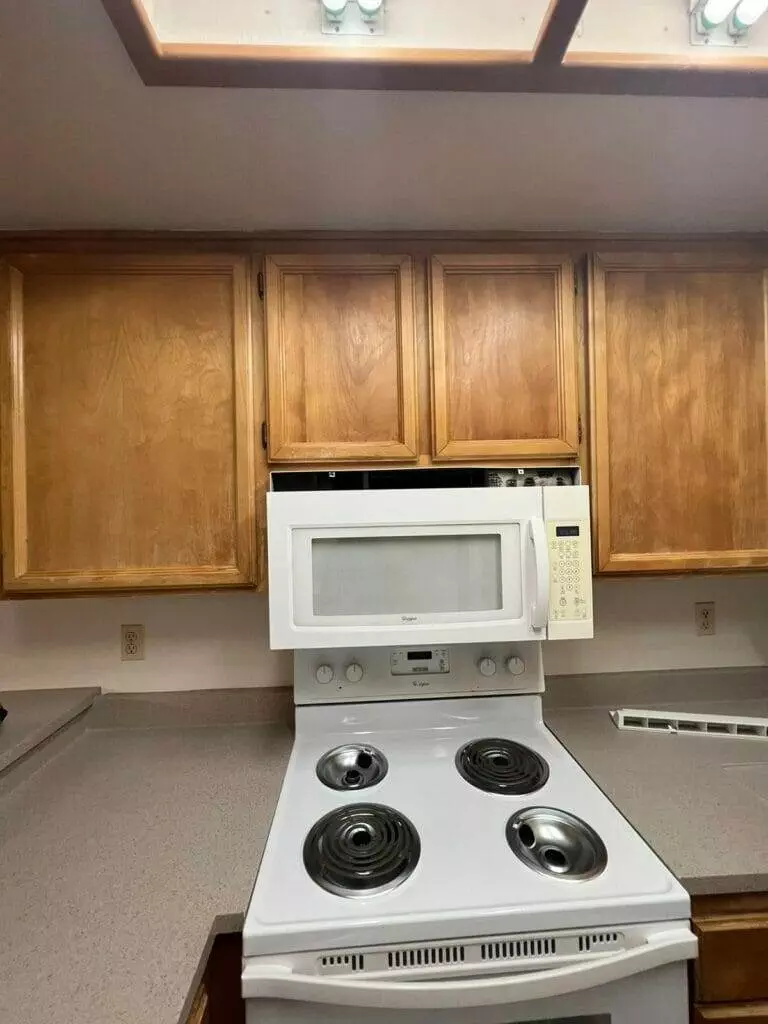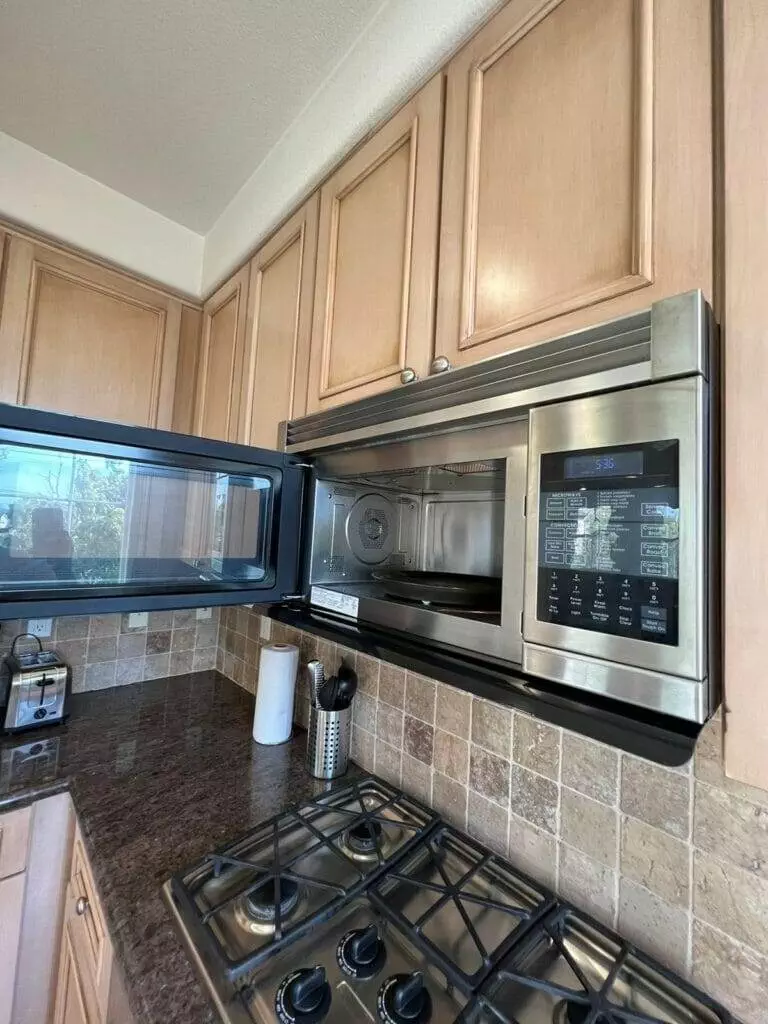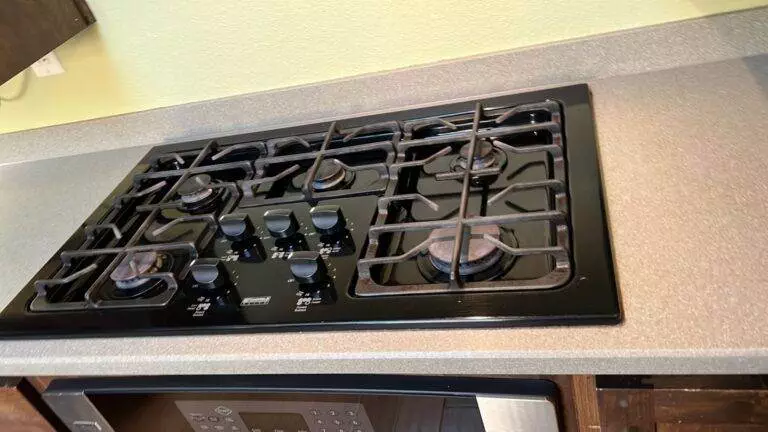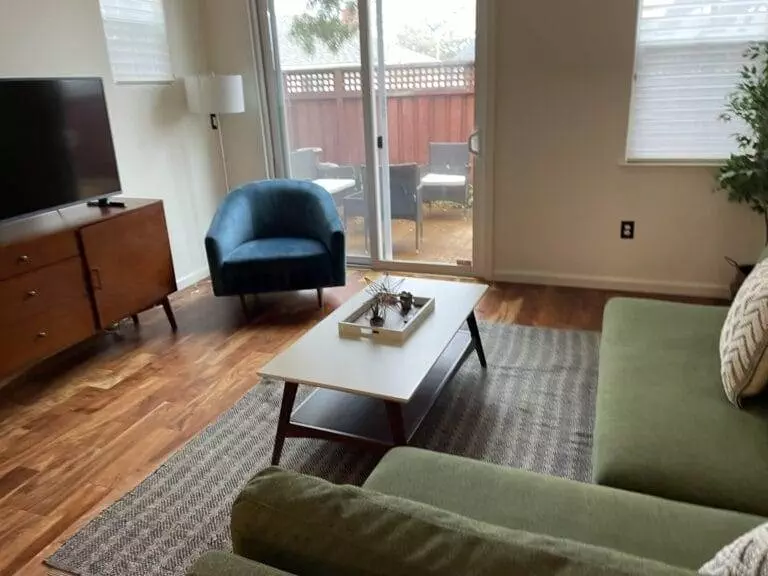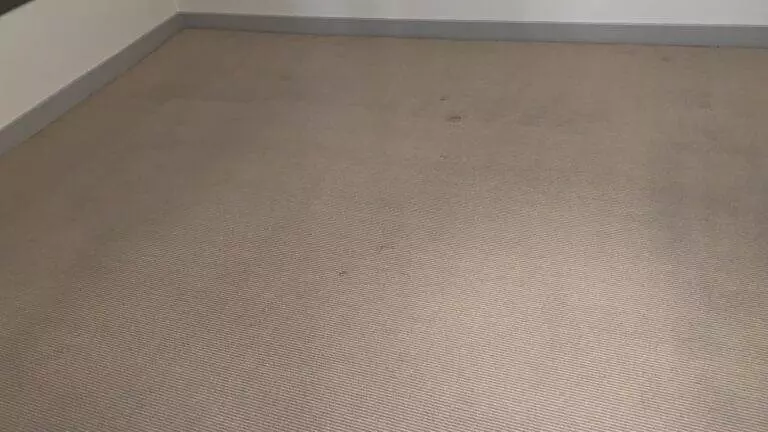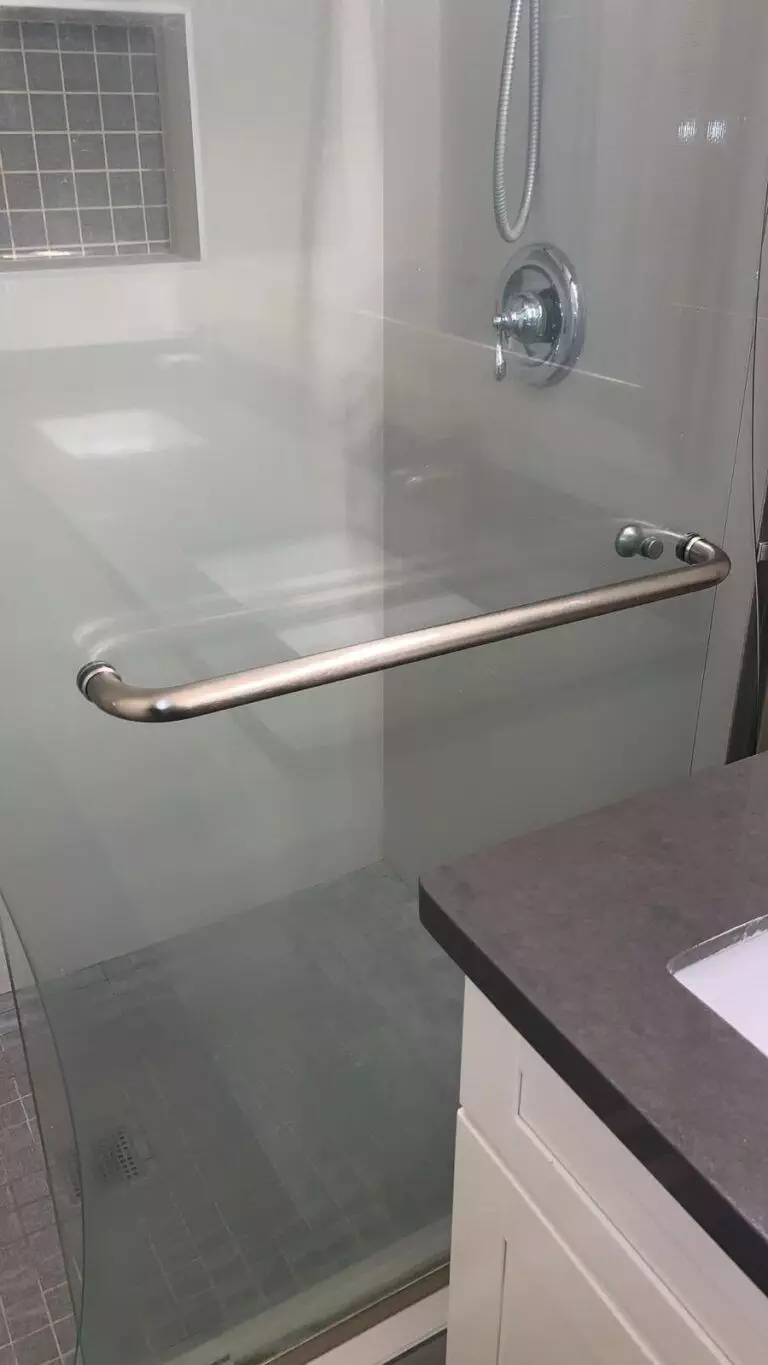How to Clean Kitchen Cabinets?
Cleaning kitchen cabinets may not be an easy task, but it can be simplified if you follow these steps:
- Empty the Cabinets: Start by removing all items from your cabinets. This not only makes cleaning easier but also gives you a chance to organize and get rid of any unused items.
- Dust Off: Use a dry microfiber cloth to dust off the surface of the cabinets.
- Prepare Your Cleaning Solution:
- For general cleaning, mix warm water with a few drops of dish soap.
- If grease is present, vinegar can be an effective cleaner. Mix equal parts of vinegar and warm water.
- For stubborn stains, make a paste of baking soda and water.
- Clean the Cabinets:
- Wipe down the cabinets with your chosen cleaning solution using a clean cloth or sponge.
- If using the baking soda paste, apply it to the stain, let it sit for a few minutes, then scrub gently with a cloth until the stain is gone.
- Rinse and Dry: Wipe down the cabinets again but this time with just warm water to rinse off any cleaning solution residue. Immediately dry them with a clean soft cloth to prevent moisture damage.
- Polish (Optional): If your cabinets are made from wood, you may want to use polish or oil specifically designed for wood care after they have been cleaned and dried completely.
- Organize your Items Back: Once your cabinets are clean and dry, you can carefully put everything back in place, taking care not to scratch the wood surfaces.
Remember always to test any new cleaners or methods on an inconspicuous part of your cabinet first to ensure it doesn’t damage or discolor your cabinets’ finish.
What are the best cleaning solutions for kitchen cabinets?
Here are some commonly used products for cleaning kitchen cabinets:
- Murphy’s Oil Soap: This is a go-to product that can clean wooden cabinets without causing any damage.
- Bona Cabinet Cleaner: Specifically designed for cabinets, it doesn’t leave residue and effectively removes grease and grime.
- Magic Cabinet & Wood Cleaner: This aerosol cleaner is excellent for removing dust, food stains, cooking oils and water marks.
- Parker & Bailey Kitchen Cabinet Cream: This product not only cleans your cabinets but also helps to preserve the wood and its finish.
- Krud Kutter Original Concentrated Cleaner/Degreaser: Known for its performance on tough stains, this multi-purpose cleaner can remove dirt, grease, grime, smoke, mildew stains, food stains from your cabinet surface effectively.
- Method All-Purpose Cleaner: A non-toxic cleaner that’s safe to use on all surfaces including wood.
How to remove grease from kitchen cabinets?
- Dish Soap and Warm Water: This combination is great for general cleaning tasks. Mix a few drops of dish soap with warm water in a bowl or bucket.
- Spray a Multi-Purpose Cleaner: You can use this cleaner on various surfaces, including countertops, stovetops, and sinks. Make sure to follow the instructions on the label of your specific cleaner for best results.
Remember to wipe dry all areas after cleaning to avoid any potential water damage or streaking.
What is the best way to clean wood kitchen cabinets?
Cleaning your wood kitchen cabinets can be done effectively using the following steps:
- Prepare Your Cleaning Solution: You can use mild dish soap and warm water, a white vinegar and warm water solution, or a commercial wood cleaner like Orange Oil Cleaner or Murphy’s Oil Soap.
- Wet a Soft Cloth: Dip a soft cloth in your chosen cleaning solution and wring out any excess liquid. The cloth should be damp but not soaking.
- Wipe Down the Cabinets: Wipe clean down each cabinet starting from the top working your way down to ensure that you don’t miss a spot. Be sure to clean around handles and corners where dirt and grease can accumulate.
- Dry the Cabinets: After wiping them down, immediately dry your cabinets with a clean towel to prevent moisture from soaking into the wood.
- Polish (Optional): If desired, you can apply furniture polish to add shine and assist in repelling dust and grime.
- Regular Maintenance: Regularly dust your cabinets use a soft microfiber cloth or duster to keep them looking their best.
Always test any cleaning solution on an inconspicuous area first to ensure it does not discolor or damage the wood.
How often should you clean your kitchen cabinets?
Your kitchen cabinets should ideally be cleaned:
- Once a week: Light dusting and spot cleaning.
- Every three months: Deep clean inside and outside the cabinets.
However, if your kitchen sees heavy use or if you often cook greasy foods which create more dirt and grime, you may need to clean your cabinets more frequently.
Regularly maintaining your kitchen cabinets can help prolong their lifespan and keep them looking fresh and new. For professional deep cleaning, you could consider hiring a service like Master Clean in the Bay Area or similar services in your locality.
How to remove stains from wood cabinets?
Here are the steps to remove stains from your wood cabinets:
- Identify the Stain: Different types of stains require different cleaning solutions, so it’s important to identify what caused the stain. This could be grease, food spills, or water marks.
- Commercial Cleaning Product: Choose a product specifically made for wood cabinets. These products often contain detergents and mineral spirits that can effectively break down grease and grime without harming the wood finish. Be sure to follow the instructions on the label.
- Apply the Cleaner: Wearing gloves, apply a small amount of cleaner onto a soft cloth or sponge and gently rub it onto the stain in a circular motion.
- Rinse Off: Rinse off with another damp cloth to remove any residue left by the cleaning solution.
- Dry: It’s crucial that you dry off any remaining moisture on your cabinet with a dry cloth to prevent water damage to your wood cabinets.
- Polish: After drying, consider applying furniture polish designed for wood cabinets to help restore shine and protect from future stains.
Remember always test any cleaning solution in an inconspicuous area first before applying it directly onto the stain to ensure it won’t harm your cabinet’s finish.
How to Clean Grease off Kitchen Cabinets?
Cleaning kitchen cabinets can be a simple process if you have the right materials. Here’s how to clean grease off of them using commercial cleaning supplies:
- Select a Commercial Degreaser: Choose a degreaser specifically designed for kitchen use. It should be safe on wood and other common cabinet materials.
- Prepare Your Area: Remove any items from your cabinets and countertops, including dishes and appliances.
- Apply the Degreaser: Depending on its instructions, you may need to dilute your degreaser with water before applying it. Use a cloth or sponge to apply it to your cabinets.
- Scrub Away the Grease: Gently scrub the surface of your cabinets using a soft cloth or sponge until the grease begins to lift.
- Rinse Off the Degreaser: Use warm water to rinse away any remaining degreaser.
- Dry Your Cabinets: Make sure your cabinets are thoroughly dried after you’ve cleaned them, as excess moisture can damage some materials over time.
- Repeat if Necessary: If there’s still visible grease on your cabinets after one round of cleaning, repeat the process until they’re completely clean.
- Regular Cleaning: To keep your cabinets looking their best, regularly wipe them down with warm water and mild soap.
Remember always follow manufacturer’s instructions when using commercial cleaning products for safety reason.
What is the most effective cleaner for grease on kitchen cabinets?
Here is a best way to clean kitchen cabinets with some of the most effective cleaners for removing grease on kitchen cabinets:
- Dish soap: It’s a mild detergent that’s great at cutting through grease. Mix a few drops with warm water and use a soft sponge or cloth to wipe down the cabinets.
- Vinegar: This natural cleaner is acidic, which helps break down grease.
- Baking Soda: It is a great degreaser and can be mixed with water to make a paste. Apply it to the greasy area, let it sit for a few minutes and then scrub off.
Remember, always test any cleaning solution in an inconspicuous area first to ensure it won’t harm your cabinet’s finish or painted cabinets.
How to use vinegar to clean kitchen cabinets?
How to to clean cabinet with vinegar:
- Mix a 50/50 solution of vinegar and warm water in a spray bottle.
- Spray the solution onto the cabinets and let it sit for a couple of minutes.
- Wipe the cabinets down with a soft cloth or sponge.
- If there are tough stains, sprinkle some baking soda on your cloth or sponge and scrub gently.
- Once all grime is removed, rinse with clean water and dry thoroughly to prevent any water spots.
Remember, it’s best not to soak the cabinets with too much liquid since this can damage the wood.
What is the best method to clean greasy kitchen cabinets?
Cabinet cleaning grime and grease from kitchen cabinets can be done effectively using several methods. Here are the best ones:
- Using a Cabinet Cleaner: Specialized cabinet cleaners, such as Parker & Bailey Kitchen Cabinet Cream, can remove grease and grime efficiently without leaving any residue.
- Murphy Oil Soap: This is an excellent product for cleaning wood cabinets. Just follow the instructions on the bottle.
- Vinegar Solution: Mix a 50/50 solution of vinegar and warm water and put into a spray bottle. Spray on the cabinets and cabinet door with vinegar solution, let sit for a minute or two and then wipe clean with a soft cloth.
- Liquid Dishwashing Detergent: A few drops of dish soap to a bucket of warm water works well to clean grease off cabinets. Be sure to rinse thoroughly with plain water to ensure no soapy residue is left behind.
Remember always test any cleaning solution in an inconspicuous area first to ensure it doesn’t damage the finish on your cabinets.
How to remove grease and grime from kitchen cabinets?
In case of stubborn grime and grease, you can add a bit more effort or elbow grease during the process. Here are the steps with that in mind:
- Clear off your cabinets: Empty all items from your cabinets in the entire kitchen.
- Prepare a cleaning solution: You can use an all-purpose cleaner, Murphy’s Oil Soap, or a mixture of dish soap and warm water.
- Dampen a cloth: Soak a soft cloth in your cleaning solution and wring it out so it’s damp, but not excessively wet.
- Wipe down your cabinets: Use the damp cloth to wipe down the cabinets. Pay special attention to all nooks and corners. If you encounter stubborn spots of grease or grime, put some more ‘elbow grease’ into it- apply more pressure or even scrub with a soft brush.
- Rinse: After wiping them down with the solution, rinse your cabinets off with a clean damp cloth to make sure no residue is left behind.
- Dry thoroughly: Using a dry towel, wipe down the cabinets until they’re completely dry.
- Polish (optional): For extra shine on your wooden cabinets, consider applying some wood polish according to product instructions after drying them off.
Always remember when dealing with wooden cabinets to work along the grain to avoid causing scratches while cleaning!
Can baking soda be used to clean kitchen cabinets?
Yes, baking soda can be used to clean kitchen cabinets. Here’s a simple way to do it:
- Mix 1/2 cup of baking soda with 1/4 cup of warm water to form a paste.
- Apply the paste to a sponge or cloth.
- Rub the dirty areas on your cabinets.
- Rinove any leftover residue with a damp cloth and dry thoroughly.
Baking soda is mildly abrasive and can effectively remove grease or grime buildup from your cabinets without scratching the surface.

How to Deep Clean Kitchen Cabinets?
Here’s a simple step-by-step guide to learn how to clean your kitchen cabinets:
- Prepare Your Cleaning Solution: Mix a few drops of grease-cutting dish soap with warm water in a bucket or bowl.
- Empty The Cabinets: Remove all items from your cabinets.
- Remove Dust and Loose Dirt: Use a dry microfiber cloth to wipe off any dust or loose dirt from the cabinet surfaces.
- Apply Your Cleaning Solution: Dip a soft cloth into your soapy water and wring it out well. Then, gently scrub your cabinets.
- Rinse Thoroughly: Using another damp cloth, wipe down the cabinet surfaces to rinse away any soapy residue.
- Dry The Cabinets: Use a dry towel to thoroughly dry off your cabinets after rinsing them.
- Tackle Stubborn Stains: If you notice any stubborn stains remaining, make a paste from baking soda and water (equal parts). Apply this paste onto the stain and let it sit for 15 minutes before scrubbing gently with a cloth then rinse and dry.
- Reapply Cabinet Finish (Optional): If your cabinets look dull after cleaning, consider reapplying a wood finish or polish following the product’s instructions precisely.
- Return Items Back To Cabinets: Once everything is dry and looking refreshed, return the items back into the cabinets.
Remember always spot test cleaning solutions on an inconspicuous area first to ensure they won’t damage or discolor your cabinetry.
What is the step-by-step process for deep cleaning kitchen cabinets?
When cleaning kitchen cabinets, it’s essential to determine whether they are made of natural wood or painted wood in order to effectively remove any stains.
Step-by-step guide on how to deep clean kitchen cabinets using commercial cleaning supplies:
- Empty the Cabinets: Remove all items from your cabinets to ensure you can reach all corners during cleaning.
- Dust Off Surfaces: With a dry cloth or feather duster, dust off the surfaces of your cabinets to get rid of any loose debris and dirt.
- Prepare Your Cleaning Solution: Check the instructions on your commercial cleaner for specific mixing directions. If no instructions are provided, mix one part cleaner with two parts warm water.
- Apply Cleaning Solution: Using a sponge or soft cloth, apply the cleaning solution to your cabinet surfaces. Always start from the top and work your way down to avoid dripping onto already clean areas.
- Scrub Gently: Use a scrub brush or old toothbrush to scrub away any stubborn stains or grimy spots. Be careful not to scrub too hard as this might damage the finish of your cabinets.
- Rinse Off Cleaner: After scrubbing, rinse off the cleaner with warm water and a clean cloth or sponge.
- Dry Cabinets: Use a dry towel to wipe down your cabinets and remove any excess moisture. This is important as leaving them wet could lead to mildew growth.
- Organize Your Items: Before returning items back into the cabinets, consider wiping each one down to ensure they’re clean as well.
- Regular Maintenance: To keep your cabinets looking their best, try to repeat this process every few months or so depending on how much use your kitchen gets.
Remember safety first! Always wear gloves when handling commercial cleaning supplies and make sure your kitchen is well-ventilated during this process. Regular cleaning of your kitchen with simple water and dish soap can help reduce cabinet stains.
How to clean cabinet surfaces and doors?
Cleaning stains on wood cabinets or other types of kitchen cabinets isn’t difficult. Here is a step-by-step guide on how to clean your cabinet surfaces and doors:
Materials You’ll Need Make your cabinets look clean and make cabinets shine:
- Warm water
- Mild dish soap
- Soft sponge or microfiber cloth
- Dry towel
- Commercial glass cleaner (if your cabinets have glass elements)
Procedure:
- Remove any items from the cabinets. This will prevent any accidental damage and allow you to clean more thoroughly.
- Cabinets require a mix solution of warm water and a few drops of mild dish soap. This will be gentle enough not to damage the cabinets but effective at removing grime.
- Dampen your soft sponge or microfiber cloth in the soapy water or use spray bottle to mist on cabinets.
- Wipe down the surfaces of the greasy cabinets, paying extra attention to handles and corners where dirt can accumulate.
- With another dry towel, wipe the cabinets dry. This helps prevent watermarks and keeps moisture from seeping into the cabinet material.
- For glass elements, use a glass cleaner to clean them up. Apply some glass cleaner onto a clean cloth and wipe over the glass areas for a streak-free finish.
- Dry all areas promptly with another dry towel to prevent streaking on the glass.
- Once everything is clean and dry, you can return your items back inside the cabinet.
Remember that it’s crucial not to leave any excessive moisture on wood or painted surfaces as it may damage them over time.

What tools and products should be used for deep cleaning cabinets?
Clean kitchen cabinets of dust and grease with the following methods, taking care to avoid damaging the finished wood or scratching it.
- Microfiber cloths
- Soft sponge
- Bucket
- Warm water
- Mild dish soap or a designated wood cabinet cleaner such as Murphy’s Oil Soap
- Commercial cabinet degreaser, like Krud Kutter( remember to wipe the cleaner off)
- Baking soda for stubborn stains
- Vinegar (for cleaning grease) may require another clean for best results
- Rubber gloves
- Old toothbrush (for detailed cleaning)
- Vacuum with crevice attachment (for hard-to-reach areas)
Again, remember to test any cleaner on an inconspicuous area first and follow the manufacturer’s instructions.
How to remove stains and grime from wood cabinets?
Here are some steps to help you clean grime and stains from your wood cabinets:
- Gather Your Supplies: You’ll need a soft cloth or sponge, dish soap, microfiber cloth, baking soda, vinegar, and warm water.
- Create Your Cleaning Solution: Mix a solution of 2 cups warm water and a few drops of dish soap.
- Start Cleaning: Dip your cloth or sponge into the solution and wring out excess water. Wipe the cabinets down, following the grain of the wood.
- Dry Cabinets: Use a dry microfiber cloth to thoroughly dry the cabinets after cleaning.
- Tough Stains / Grime Treatment: Make a paste with equal parts vinegar and baking soda. Apply this mixture directly onto stubborn stains or grime with a soft cloth. Let it sit for a few minutes before wiping away with warm soapy water.
- Rinse & Dry Again: Rinse any residue off with clean warm water then dry thoroughly with another clean microfiber cloth.
Remember not to use excessive amounts of water during this process as it can damage the wood over time!
How to Clean Laminate Kitchen Cabinets?
Cleaning laminate kitchen cabinets is a relatively straightforward task. Here’s a step-by-step guide:
- Gather Your Supplies
- A bucket
- Mild dish soap
- Non-abrasive sponge or cloth
- Baking soda (optional)
- Vinegar (optional)
- Soft, dry towel
- Create the Cleaning Solution Fill your bucket with warm water and add a few drops of mild dish soap for a gentle cleaning solution. Alternatively, you can mix equal parts vinegar and warm water for a natural solution.
- Wipe Down the Cabinets Dip your non-abrasive sponge or cloth into the cleaning solution and wring out any excess liquid. Then, starting from the top of your cabinets working downwards, wipe down all surfaces of your cabinets.
- Address Tough Stains If you encounter stubborn stains that won’t lift off easily, mix a little baking soda with some water to create a paste. Apply this paste to the stain and let it sit for a few minutes before gently scrubbing it away.
- Rinse and Dry Once you’ve wiped down all of your cabinet surfaces, rinse your sponge or cloth with clean water and go over the cabinets again to remove any soapy residue. Finally, dry them off thoroughly using a soft, dry towel to avoid leaving any streaks or spots.
- Regular Maintenance To keep your laminate kitchen cabinets looking their best, try to clean them regularly – at least once every two weeks is ideal. This will prevent grime from building up on the surface.
Remember not to use harsh chemicals or abrasive tools on laminate surfaces as they can cause damage.
What are the recommended cleaning methods for laminate cabinets?
Cleaning laminate cabinets can be done with simple household items and through a few easy steps:
- Dust off the surface: Use a microfiber cloth to dust off the surfaces of your cabinets.
- Prepare the cleaning solution: Mix a solution of warm water and mild soap, dishwashing liquid or an all-purpose cleaner.
- Wipe down the cabinets: Dip a soft cloth or sponge in your cleaning solution and wipe down the cabinet surfaces. Do not over-saturate as water ingress can damage laminate.
- Tackle stubborn stains: If you have tough stains, you may use baking soda mixed with water to create a paste, apply it on the stain, leave for 5 min then gently scrub it away.
- Rinse and dry: Rinse with clean water using another clean cloth, then dry immediately to avoid any moisture absorption.
Remember to always test any cleaners on an inconspicuous spot first to make sure they won’t discolor or damage your cabinets.
How to remove grease from laminate kitchen cabinets?
Here are the steps to effectively remove grease from laminate kitchen cabinets:
- Create a cleaning solution: Mix two cups of warm water with a few drops of dish soap. This mixture can be very effective against most types of kitchen grime.
- Apply the solution: Dip a soft cloth or sponge in the soap and water mixture and wring out excess liquid.
- Clean the cabinets: Gently wipe the cabinets with the damp cloth or sponge, making sure to pay extra attention to any greasy areas.
- Rinse off: Once you’re done wiping down your cabinets, rinse your cloth with clean water and go over the cabinets once more to rinse off any soapy residue.
- Dry: Use a dry towel to thoroughly dry your cabinets after cleaning them. Moisture left sitting on laminate can cause damage over time.
- Commercial cleaners: In case the grease is too stubborn for dish soap and water, you may consider using a commercial degreaser designed for kitchen use according to its specific instructions.
Remember, always test new cleaning solutions on an inconspicuous part of your cabinet first to ensure that they won’t cause any discoloration or damage.
What cleaning products should be avoided for laminated surfaces?
When cleaning laminated surfaces, it’s important to avoid using abrasive cleaners and tools such as scouring pads, steel wool, or harsh chemicals like bleach or ammonia. These can scratch or discolor laminate surfaces. Additionally, products containing acetone or any kind of strong solvents should be avoided as they may cause damage. Acidic or alkaline-based cleaners can also harm the finish of laminated surfaces over time. Always opt for gentle, non-abrasive cleansers and soft cleaning cloths to maintain your laminate in top condition.
How to maintain the shine of laminate cabinets?
Maintaining the shine of laminate cabinets involves regular cleaning and gentle care to avoid damage. Here’s how you can do it:
- Regularly dust your cabinets with a soft, dry cloth. Dust buildup can dull the lamination.
- Wipe off smudges and spills immediately with a damp cloth.
- Once a week, clean your cabinets more thoroughly using a mild detergent mixed in warm water.
- Avoid using abrasive cleaners or harsh chemicals as these can damage the laminate surface.
- Use a soft, non-abrasive cloth for cleaning.
- After cleaning, dry the surfaces properly to prevent any moisture damage.
- If you notice dull spots, consider applying a laminate-friendly polish to restore shine.
Remember, it’s important to treat your cabinets gently and clean them regularly to maintain their shine over time.
Can baking soda be used to clean laminate kitchen cabinets?
Yes, baking soda can be used to clean laminate kitchen cabinets.
